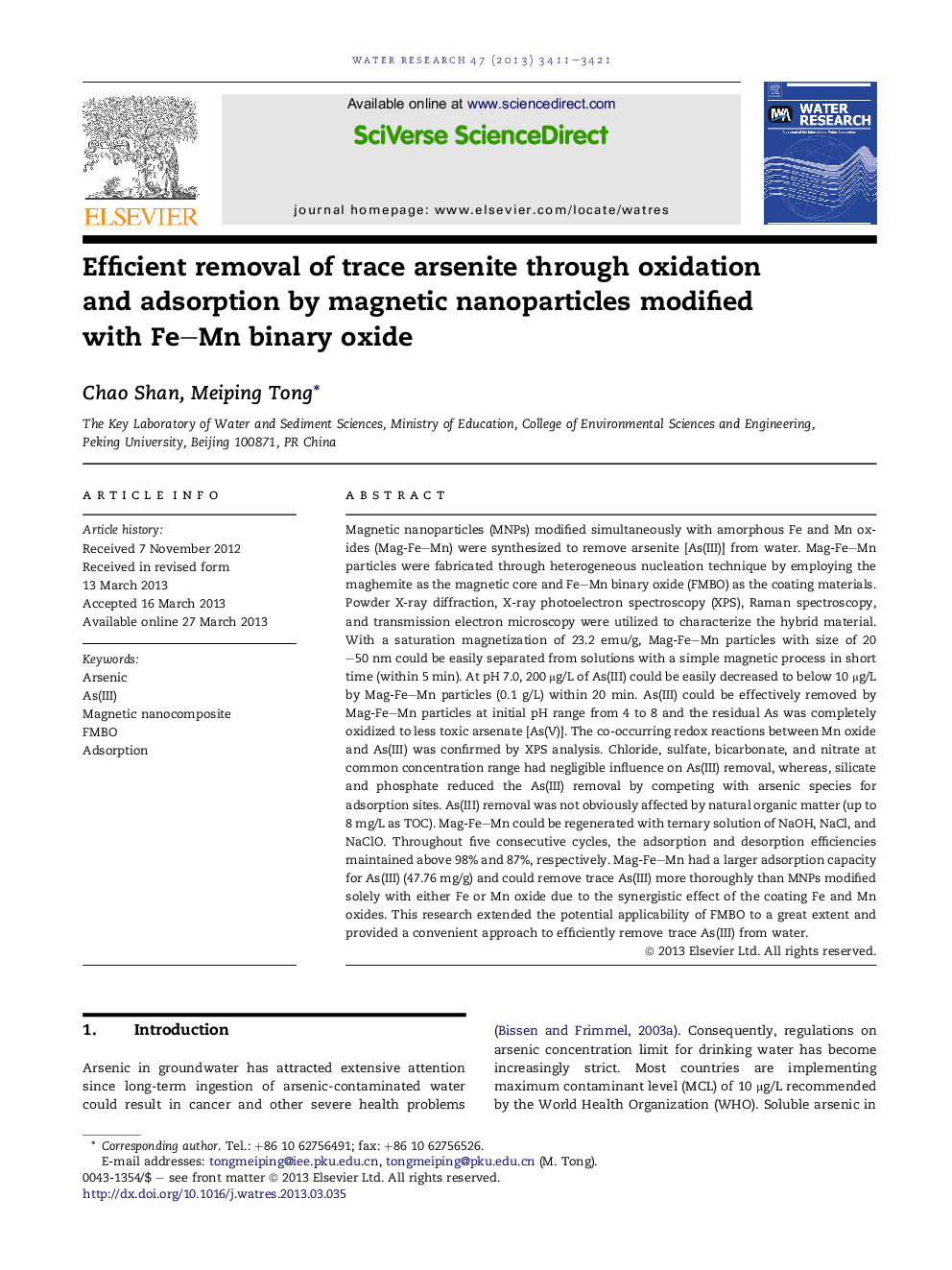| Article ID | Journal | Published Year | Pages | File Type |
|---|---|---|---|---|
| 4481805 | Water Research | 2013 | 11 Pages |
•MNPs were for the first time successfully modified with Fe–Mn binary oxide.•0.1 g/L Mag-Fe–Mn could lower As(III) from 200 to <10 μg/L at pH from 4 to 8.•Common coexisting anions and NOM had negligible influence on As(III) removal.•Adsorption and desorption maintained above 98% and 87% throughout 5 cyclic runs.•Mag-Fe–Mn was more effective for As(III) removal than either Mag-Fe or Mag-Mn.
Magnetic nanoparticles (MNPs) modified simultaneously with amorphous Fe and Mn oxides (Mag-Fe–Mn) were synthesized to remove arsenite [As(III)] from water. Mag-Fe–Mn particles were fabricated through heterogeneous nucleation technique by employing the maghemite as the magnetic core and Fe–Mn binary oxide (FMBO) as the coating materials. Powder X-ray diffraction, X-ray photoelectron spectroscopy (XPS), Raman spectroscopy, and transmission electron microscopy were utilized to characterize the hybrid material. With a saturation magnetization of 23.2 emu/g, Mag-Fe–Mn particles with size of 20–50 nm could be easily separated from solutions with a simple magnetic process in short time (within 5 min). At pH 7.0, 200 μg/L of As(III) could be easily decreased to below 10 μg/L by Mag-Fe–Mn particles (0.1 g/L) within 20 min. As(III) could be effectively removed by Mag-Fe–Mn particles at initial pH range from 4 to 8 and the residual As was completely oxidized to less toxic arsenate [As(V)]. The co-occurring redox reactions between Mn oxide and As(III) was confirmed by XPS analysis. Chloride, sulfate, bicarbonate, and nitrate at common concentration range had negligible influence on As(III) removal, whereas, silicate and phosphate reduced the As(III) removal by competing with arsenic species for adsorption sites. As(III) removal was not obviously affected by natural organic matter (up to 8 mg/L as TOC). Mag-Fe–Mn could be regenerated with ternary solution of NaOH, NaCl, and NaClO. Throughout five consecutive cycles, the adsorption and desorption efficiencies maintained above 98% and 87%, respectively. Mag-Fe–Mn had a larger adsorption capacity for As(III) (47.76 mg/g) and could remove trace As(III) more thoroughly than MNPs modified solely with either Fe or Mn oxide due to the synergistic effect of the coating Fe and Mn oxides. This research extended the potential applicability of FMBO to a great extent and provided a convenient approach to efficiently remove trace As(III) from water.
Graphical abstractFigure optionsDownload full-size imageDownload high-quality image (246 K)Download as PowerPoint slide
